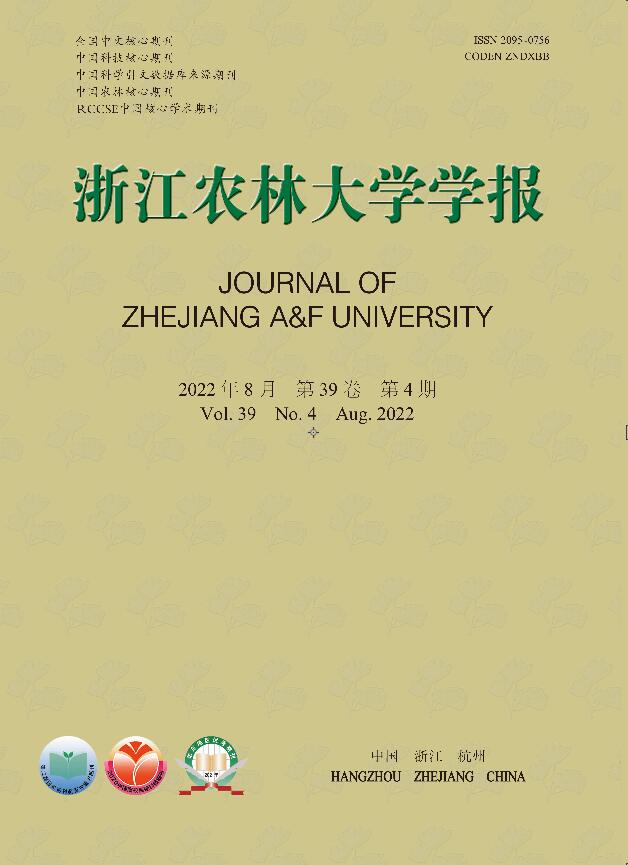-
野生蔬菜,简称野菜,是指自然生长、未经人工驯化栽培,整株或部分可食的野生植物[1],也有把野生食用菌归入野菜中[2],本研究仅指野生植物。野菜在中国具有悠久的使用历史,《诗经》《尔雅》等书中已有相关记载,明清时期的《救荒本草》《野菜谱》《养生八笺》等对野菜种类和功能进行了介绍。野菜在中国分布广泛,总体上呈南多北少的趋势,据不完全统计,约213科1 822种,其中可食用的400余种[3]。早期,野菜多作为饮食补充;随着研究的深入,野菜中的特殊营养物质和药用成分被逐步发掘出来,使其成为天然生物活性物质的重要来源,被用于预防和治疗各种疾病[4-5]。目前有关野菜资源分布、基本营养成分和生物活性物质测定等方面已有一些研究,本研究因此对野菜的功能性成分及其生物活性进行了综述,为进一步开展野菜活性成分研究以及食品工业原料、天然药物成分开发等提供理论基础。
-
研究发现野菜中含有丰富的矿质元素,如琉璃苣Borago officinalis、野生菊苣Cichorium intybus和花叶滇苦菜Sonchus asper中含有丰富的钾、铁和锌元素[6],刺桐Erythrina variegata中也含有较高的钾、锌元素[7]。部分野菜中的某些矿质元素含量更高,如马齿苋Portulaca oleracea钙、镁含量是油菜Brassica napus的3.6和14.0倍、芥蓝Brassica oleracea的4.5和8.8倍[8]。此外,KAUR等[9]研究发现野生鹰嘴豆Cicer arietinum比栽培鹰嘴豆具有更高的钙、镁和锰含量;徐亚莉[10]分别在培养箱和大田环境下对野生和栽培马齿苋主要矿质成分以及微量元素含量进行了对比,发现野生型马齿苋的钙、镁和微量元素含量均高于栽培型马齿苋,其中大田中野生型马齿苋钙、镁和微量元素含量分别比栽培型马齿苋钙、镁和微量元素含量高出2.3%、13.0%和10.5%。
-
目前,有关野菜中氨基酸的组分和含量的研究已有不少报道,如曹利民等[11]发现赣产5种野菜:牛膝Achyranthes bidentata、白花败酱Patrinia villosa、鸭儿芹Cryptotaenia japonica、马兰Kalimeris indica、白花鬼针草Bidens pilosa均含有16种氨基酸,其必需氨基酸质量分数为36.2~74.5 g·kg−1;HUANG等[12]从不同品种的野生箭筈豌豆Vicia sativa中检测出18种氨基酸,其中一半为必需氨基酸,总氨基酸含量为173.00~286.05 g·kg−1;黄元河等[13]也从右江流域5种野菜:狗肝菜Dicliptera chinensis、铜锤玉带草Lobelia angulata 、野芋Colocasia gigantea、鸭儿芹和五指牛奶Ficus simplicissima中检测出14~18种游离氨基酸,除野芋外其他4种野菜中均含8种必需氨基酸。
1973年联合国粮农组织和世界卫生组织在Energy and Protein Requirement上发布了食物中氨基酸的配比标准,建议以此作为优质蛋白质来源的评价标准[14]。对照这个标准,一些野菜中的氨基酸不仅种类丰富,而且配比良好。黄元河等[13]研究发现狗肝菜、鸭儿芹和野芋叶柄的苏氨酸、缬氨酸、亮氨酸和苯丙氨酸—酪氨酸的含量配比接近标准值;包艳玲等[15]报道车前草Plantago major的必需氨基酸与总氨基酸的含量比值(EAA/TAA)为38.584%,必需氨基酸与非必需氨基酸的含量比值(EAA/NEAA)为61.416%,与WHO/FAO提出的理想蛋白模式 EAA/TAA(40%)和EAA/NEAA(60%)非常接近。此外,特定的氨基酸组分与野菜的风味存在关联,如野生马齿苋[16]等野菜中天冬氨酸、谷氨酸和丙氨酸含量远高于一些栽培蔬菜,使这些野菜更有鲜味。
-
已有研究表明:不少野菜含有抗坏血酸、胡萝卜素和生育酚等多种对人体健康特别重要的维生素[10, 17-18]。马兰[11]、蒲公英Taraxacum mongolicum[19]等植株中检测出多种B族维生素。研究也发现部分野菜中的维生素单位含量高于栽培蔬菜,如《中国野菜图谱》就记载了88种野菜的胡萝卜素含量高于胡萝卜Daucus carota[20];刺苋Amaranthus spinosus的维生素C含量比普通生菜Lactuca sativa高出几十倍[8, 21]。此外,CECCANTI等[17]和MEDINA-LOZAND等[22]报道野生菊苣和一些野生莴苣Lactuca sativa品种的抗坏血酸含量高于栽培品种,这种情况的出现被认为可能是维生素C等一些营养物质在长期的作物驯化过程中出现了流失。
-
不少野菜具有良好的脂肪酸组成,开发利用价值高。刘娜[23]在齿果酸模Rumex dentatus叶子中检测出9种脂肪酸,且主要都为不饱和脂肪酸;陈军等[24]和吴永祥等[25]分别在猫爪草Ranunculus ternatus和豆腐柴Premna microphylla叶中检测出亚油酸、棕榈酸、8-十八碳烯酸等有益脂肪酸。美国农业部还曾在《特定食品中omega-3脂肪酸和其他脂肪成分含量暂定表》中表明野生马齿苋是所有被检测的绿叶蔬菜中omega-3脂肪酸最丰富的作物[26]。可见野菜资源可以成为脂肪酸功能组分的重要来源,为人们日常饮食和功能食品的开发做出贡献。
-
从植物中提取有益多糖是近年来的研究热点。不同种类和地区野菜中的多糖质量分数不同,如郑奎玲等[27]对黔产8种野菜中的多糖质量分数进行了比较发现:8种野菜中蓝布正Geum japonicum的多糖质量分数最高(120.1 mg·g−1);周新华等[28]对10个地区的野生夏枯草Prunella vulgaris研究发现:不同地区夏枯草多糖质量分数差异显著,多糖的质量分数为70.45~120.39 mg·g−1。多糖提取率不仅取决于野菜的生长环境,还与多糖的提取方法有关。如刘珊珊等[29]尝试双酶法从干燥蒲公英根中提取多糖,得率达32.97%;张志强等[30]和陈凌等[31]分别采用超声波辅助法和酶法提取马齿苋多糖,前者得率为13.55%,而后者仅为0.42%。
-
黄酮类化合物是一类重要的植物次生代谢产物,在野菜中分布广泛。如野生大豆Glycine max[32]和野萝卜Raphanus raphanistrum[33]中分别检测到了17和12种黄酮类化合物;AWOUAFACK等[34]从鸡头薯属Fabaceae eriosema的5个物种中总共分离出包括异黄酮、二氢黄酮醇、黄酮醇和黄烷酮等52种黄酮类化合物;MARENGO等[35]从菊科Compositae飞廉Asteraceae carduus中提取出18种黄酮和7种黄酮醇,主要成分为槲皮素、木犀草素、山奈酚和芹菜素-O-糖苷等。此外,不同野菜及品种间的黄酮类化合物质量分数存在差异,如15种野生鹰嘴豆中黄酮醇质量分数为79.4~242.0 mg·kg−1 [9];苦苣菜Sonchus oleraceus、紫背天葵Begonia fimbristipula、紫苏Perilla frutescens和苦菊Cichorium endivia等10种野菜中总黄酮质量分数最高为苦苣菜(85.69 mg·g−1),最低为苦菊(3.75 mg·g−1)[36]。
-
一些野菜含有丰富的酚酸类以及花色苷类等非黄酮类化合物。如野茭白Zizania latifolia中测出羟基苯甲酸、对香豆酸、香草醛、芥子酸等10种酚酸类物质[37];DATTA等[38]研究发现蕹菜Ipomoea aquatica含有6种酚酸类物质,质量分数为0.33~18.27 mg·kg−1;GIAMBANELLI等[39]在13种野生菊科蔬菜中发现了7种羟基肉桂酸和3种花色苷,其中羟基肉桂酸的质量分数为1 388~53 076 mg·kg−1,占总酚质量分数的69%~98%;张瑞军等[40]对四川9种野生百合Lilium不同部位的花色苷质量分数进行比较,从高到低分别为花(8.73~26.33 mg·g−1)、叶(13.29~18.36 mg·g−1)、茎秆(2.21~6.75 mg·g−1)、鳞茎(1.33~4.26 mg·g−1),器官间花色苷质量分数差异显著。
-
许多野菜中存在多酚类化合物、萜类化合物等生物活性物质(表1),在抗炎、抗氧化、抗肿瘤、抗菌和抗病毒等方面表现出了良好功效[41-42]。
-
野菜含有丰富萜类和生物碱类等化合物,这些物质具有抗炎活性。如马齿苋[43]中提取出的儿茶酚型四氢异喹啉类生物碱可抑制炎性介质(TNF-α、IL-1β、IL-6和PGE2)的产生;WANG等[44]在掌叶蜂斗菜Petasites tatewakianus中分离出的13种倍半萜烯对LPS诱导的小鼠胶质BV-2细胞中NO产生较强的抑制作用。HAN等[45]首次报道了猴腿蹄盖蕨Athyrium multidentatum提取物的抗炎活性,发现其主要机制是通过促使IκB抗体高表达,进而抑制NO、前列腺素E2(PEG2)和促炎介质的产生,从而达到预防急性肺损伤的功效,并认为其抗炎活性可能与植物体中的高水平黄酮(36.09 mg·g−1)密切相关。
-
野菜中存在多种具有自由基清除能力的活性物质,如马齿苋的叶、茎和花中的抗坏血酸和β-胡萝卜素能够中和自由基,在清除DPPH自由基方面具有显著效果[46];KYUNG等[47]发现夏枯草、蜂斗菜Petasites japonicas等5种野菜的总酚提取物具有较高的铁离子还原能力和DPPH自由基清除活性,其中夏枯草提取物铁还原抗氧化能力(FRAP)值达166.85 mmol·L−1;见霜黄Blumea lacera和刺桐的DPPH自由基清除活性分别达75.11%和89.27%,进一步研究后确认酚类化合物是这2种野菜中最主要的生物活性物质[7]。
此外,野菜的抗氧化活性还受发育阶段和组织部位的影响。如野茭白在发芽期具有更好的抗氧化能力[37];吊帚兰Corema album不同部位显示出不同的抗氧化活性,叶片的DPPH清除能力(38.9 μmol·g−1)最好,其次为果实、花朵和种子,ABTS自由基清除和铁还原能力的试验结果与DPPH具有很强的正相关性,根据随后进行的核磁共振氢谱(1H NMR)实验数据判断,研究者们认为大部分抗氧化能力可能与酚酸,尤其是羟基肉桂酸有关[48]。
-
已发现一些野菜的提取物具有良好的抗癌、抗肿瘤功效,如蒲公英中的黄酮、酚酸[49-50]、萜醇[51],桔梗Platycodon grandiflorus中的皂苷[52]等均能较好地抑制肿瘤细胞的增殖;桔梗多糖和蕨Pteridium aquilinum多糖等在促进如宫颈癌、肝癌、肠癌等肿瘤细胞凋亡方面具有良好的功效[53-54];BILUŠIĆ等[55]研究发现:野生芦笋Asparagus acutifolius中酚类化合物(槲皮素、异鼠李素-3-O-芸香糖苷)对膀胱癌细胞(T24)和肺癌细胞(A549)具有抗增殖和促凋亡能力;OLIVEIRA等[56]报道了吊帚兰中总叶蛋白对结肠癌(HT29)细胞中MMP-2和MMP-9有抑制活性;ABU等[57]发现野生蓟Gundelia tournefortii的甲醇和己烷提取物对HCT-116癌细胞具有显著的抗肿瘤活性,并通过气质谱联用技术(GC-MS)确定了提取物中谷甾醇、豆甾醇、羽扇豆醇、α-香豆素和青蒿素等活性物质的存在;野洋葱Allium cepa甲醇提取物也在抑制人肝癌(HepG2)和肺癌(A549)细胞的增殖方面有较好的能力,并能保护正常人成纤维细胞(MRC-5)免受阿霉素(Dox)细胞毒性的影响,其作用可能归因于槲皮素和异鼠李素[58]。
-
有研究发现苦苣菜提取物(总酚、类黄酮)对大肠埃希菌Escherichia coli,肠道沙门氏菌Salmonella enteritidis、副溶血弧菌Vibrio parahaemolyticus和金黄色葡萄球菌Staphylococcus aureus等有较好的抑制作用,且其抗菌活性与黄酮含量呈正相关[59];JOSHI等[60]报道了大叶火筒树Leea macrophylla乙醇提取物对金黄色葡萄球菌、弗氏志贺菌Shigella flexneri和铜绿假单胞菌Pseudomonas aeruginosa的抑菌效果突出,这种抗微生物活性可能与在植物化学物的积累有关,这些物质会对微生物细胞膜造成损害,从而导致其死亡;PETROPOULOS等[61]研究发现:9种菊科Asteraceae野菜提取物对抗蜡样芽孢杆菌Bacillus cereus、鼠伤寒沙门氏菌Salmonella typhimurium和青霉菌Penicillium有显著的抗菌活性;高宁[62]研究发现:老山芹Heracleum dissectum黄酮能够有效抑制多种菌的生长特别是革兰氏阳性菌(枯草芽胞杆菌Bacillus subtilis和金黄色葡萄球菌),原因可能为革兰氏阳性菌的细胞壁结构简单,而黄酮类化合物对菌体的细胞壁及细胞膜的破坏更有效。
-
野菜中含有的酚类、萜类和生物碱类等多种化合物对抗病毒的研究具有重大意义。有报道金银花Lonicera japonica水提物在抑制小鼠感染登革热病毒(DENV)[63]和预防石斑鱼虹膜病毒(SGIV-Gx)感染等方面具有良好的效果[64];鱼腥草Houttuynia cordata多糖对肠道病毒71型(EV71)、呼吸道合胞病毒(RSV)和柯萨奇病毒B3(CV-B3)等多种病毒具有一定的体外抗病毒活性,且抑制效果与多糖纯度呈正相关[65];SONG等[66]发现甘草Glycyrrhiza uralensis根中的齐墩果烷型三萜皂苷类物质在浓度为100 μmol·L−1时对H1N1病毒有抑制活性,抑制率为47.5%~82.5%,其中甘草次酸还表现为抑制艾滋病病毒(HIV)活性的能力;YOU等[67]研究发现:香椿叶水提物可以通过下调黏附分子和趋化因子(VCAM-1, ICAM-1, E-selectin, IL-8和fractalkine)抑制病毒附着在对H1N1病毒的替代治疗和预防上可能起到重要作用。
-
野菜中的活性物质对降血糖、调节免疫等也具有良好的功效。如马齿苋水提取物可诱导血清肿瘤坏死因子(TNF-α)和多效性细胞因子(IL-6)水平降低,从而促使小鼠血糖水平显著下降[68];ZHAO等[69]报道桔梗多糖能够提高淋巴细胞增殖活性,进而增强免疫功能。
功效 物质成分 野菜种类 部位 参考文献 化合物 主要物质 抗炎 萜类化合物 倍半萜烯 掌叶蜂斗菜Petasites tatewakianus 叶 [44] 生物碱类物质 儿茶酚型四氢异喹喹啉类 马齿苋Portulaca oleracea 全株 [43] 酚酸类物质 总黄酮 猴腿蹄盖蕨Athyrium multidentatum [45] 抗氧化 有机酸 抗坏血酸 马齿苋 [46] 酚酸类物质 总酚、总黄酮 见霜黄Blumea lacera、刺桐、夏枯草等 叶 [7,47] 对香豆酸、香草酸、阿魏酸和芥子酸等 野茭白Zizania latifolia 发芽种子 [37] 其他 β-胡萝卜素 马齿苋 [46] 抗癌、抗肿瘤 总蛋白提取物 吊帚兰Corema album 叶 [56] 多糖 桔梗Platycodon grandiflorus、蕨Pteridium aquilinum [53−54] 萜类化合物 萜醇 蒲公英 [51] 谷甾醇、豆甾醇和羽扇豆醇等 蓟Gundelia tournefortii [57] 酚酸类物质 槲皮素和异鼠李素-3-O-芸香糖苷等 野生芦笋Asparagus acutifolius 整株 [55] 抗菌 酚酸类物质 总酚 苦苣菜 叶 [59] 单宁、绿原酸 大叶火筒树Leea macrophylla 块根 [60] 抗病毒 多糖 鱼腥草Houttuynia cordata 整株 [65] 萜类化合物 甘草酸及其衍生物 甘草Glycyrrhiza uralensis 根 [66] 酚酸类物质 没食子酸、槲皮素和芦丁等 香椿Toona sinensis 叶 [67] 降血糖 酚酸类物质 儿茶素、绿原素、水杨酸和迷迭香酸等 马齿苋 地上部 [68] 调节免疫 多糖 桔梗 [69] Table 1. Bioactive components of wild edible vegetables and their efficacy
-
如表2所示:目前野菜矿质元素测定的常见方法主要有原子吸收分光光度法、电感耦合等离子体光谱法(ICP-OES)和电感耦合等离子体质谱法(ICP-MS),其中ICP-OES和ICP-MS在微量元素或极低浓度元素的检测方面有较多应用[70-72];脂肪酸一般通过GC-MS进行分析[24];氨基酸组分分析和生育酚则多采用高效液相色谱法(HPLC)[11, 72];紫外-可见分光光度法是总酚、总黄酮、多糖和类胡萝卜素等化合物常用的定量方法,但在涉及化合物结构鉴定或特定化合物分析时则一般采用高效液相色谱法(HPLC)和质谱法[30, 73];抗坏血酸的测定方法较多,其中国外发表的研究报道中以超高效液相色谱法(UPLC)和分光光度法较为多见[7, 21, 22],国内则更多使用国标中的分光光度法和2, 6-二氯靛酚滴定法[62];此外,有机酸基本采用UPLC和HPLC法进行分析[72, 74]。野菜中物质成分的分析和鉴定对其活性成分研究非常关键,相关的检测分析方法与技术在某种程度上限制了该领域研究的发展。总体上,相关分析方法正在往快速、痕量和精准化发展,色谱技术和光谱技术以及联用技术在未来或会得到更广泛的应用。
成分 方法和技术 野菜种类 参考文献 矿质元素 ICP-MS、ICP-OES 菊花脑Dendranthema indicum、香椿、蒲公英、马兰Kalimeris indica等 [70] 原子吸收分光光度法 皱果苋Amaranthus viridis和马齿苋等 [71,72] 脂肪酸 GC-MS 猫爪草Ranunculus ternatus [24] 氨基酸 HPLC 牛膝Achyranthes bidentata、白花败酱Patrinia villosa、鸭儿芹Cryptotaenia
japonica、马兰、白花鬼针草Bidens pilosa和马齿苋等[11,72] 总酚,类胡萝卜素,
总黄酮,多糖紫外分光光度法,
HPLC马齿苋 [30,73] 抗坏血酸 UPLC 野生莴苣Lactuca sativa [22] 分光光度法 见霜黄、印度田菁Sesbania sesban和刺苋Amaranthus spinosus等 [7,21] 2, 6-二氯靛酚滴定法 老山芹Heracleum dissectum [62] 生育酚 HPLC 马齿苋和脐景天Umbilicus rupestris等 [72,74] 有机酸 UPLC、HPLC 脐景天等 [72,74] Table 2. Methods and techniques for determination of nutrition and active components in common wild edible vegetables
-
野菜作为风味独特的野生或半野生植物,由于其本身活性成分丰富,具有食用、药用和工业等开发利用价值,已逐渐成为市场的热点。野菜不仅是人们日常饮食的重要补充,亦是重要的种质资源,其多样的形态、丰富的物质组分及含量是宝贵的资源库,在蔬菜种质资源创新和育种等方面具有重要意义。中国具有丰富的野菜资源,目前研究较多的科属仅限菊科、豆科Leguminosae、禾本科Gramineae等少数,存在研究对象少、研究领域深度不足等问题,未来需要加大野菜开发范围,尤其是深加工工艺和产品开发。野菜往往具有特殊的风味和口感,其所含的氨基酸种类和脂类等与栽培蔬菜具有差异,许多野菜含有多种酚类、萜类化合物等具有抗氧化、抗炎症及抗肿瘤等功能的生物活性物质,在预防疾病、药物开发等方面具有较大潜力。但当前对野菜生物活性的研究局限在常见的代谢物质,对于一些构成野菜特殊风味的萜烯类等挥发性成分的研究还有待深入,未来需要进一步开展对野菜特殊风味形成、安全性评价和抗炎症等生物活性的研究。随着生物学研究技术和检测技术的快速发展,如物质分离提取技术和代谢组等技术应用,后续可加强对野菜中单一物质成分的分离、提取工艺和功能鉴定研究,明确其活性功能机制,筛选主要食药用成分并进行产业化开发利用,促进产业发展。
Research progress on functional components and biological activities of wild edible vegetables
doi: 10.11833/j.issn.2095-0756.20210550
- Received Date: 2021-08-10
- Accepted Date: 2022-03-15
- Rev Recd Date: 2021-12-13
- Available Online: 2022-07-20
- Publish Date: 2022-08-20
-
Key words:
- wild edible vegetables /
- nutritional and functional components /
- biological activity /
- review
Abstract: There is a long history of use of wild edible vegetables in China. They have abundant functional components, including mineral elements, amino acids, vitamins, polysaccharides, flavonoids and so on. It has important scientific significance and application value to study the basic components of wild edible vegetables for a comprehensive understanding of the nutrients and biological activities. We listed the main nutritional and functional components, summarized the current main research results in the biological activity, including: (1) the content of basic nutrients in wild edible vegetables; (2) the profiles of functional compounds in wild edible vegetables; (3) analysis of active components and efficacy of wild edible vegetables; (4) common methods and technologies to component analysis of wild edible vegetables. Wild edible vegetables are rich in basic nutrients and bioactive substances, including vitamins, phenols and terpenes, which have good activities in antibacterial, antioxidant, antitumor and anti-inflammatory. Future research should focus on functional components and biological activities, and serves as a reference for subsequent development and application. [Ch, 2 tab. 74 ref.]
| Citation: | LI Yaochen, FAN Zipei, YANG Jing, et al. Research progress on functional components and biological activities of wild edible vegetables[J]. Journal of Zhejiang A&F University, 2022, 39(4): 913-922. DOI: 10.11833/j.issn.2095-0756.20210550 |







 DownLoad:
DownLoad: